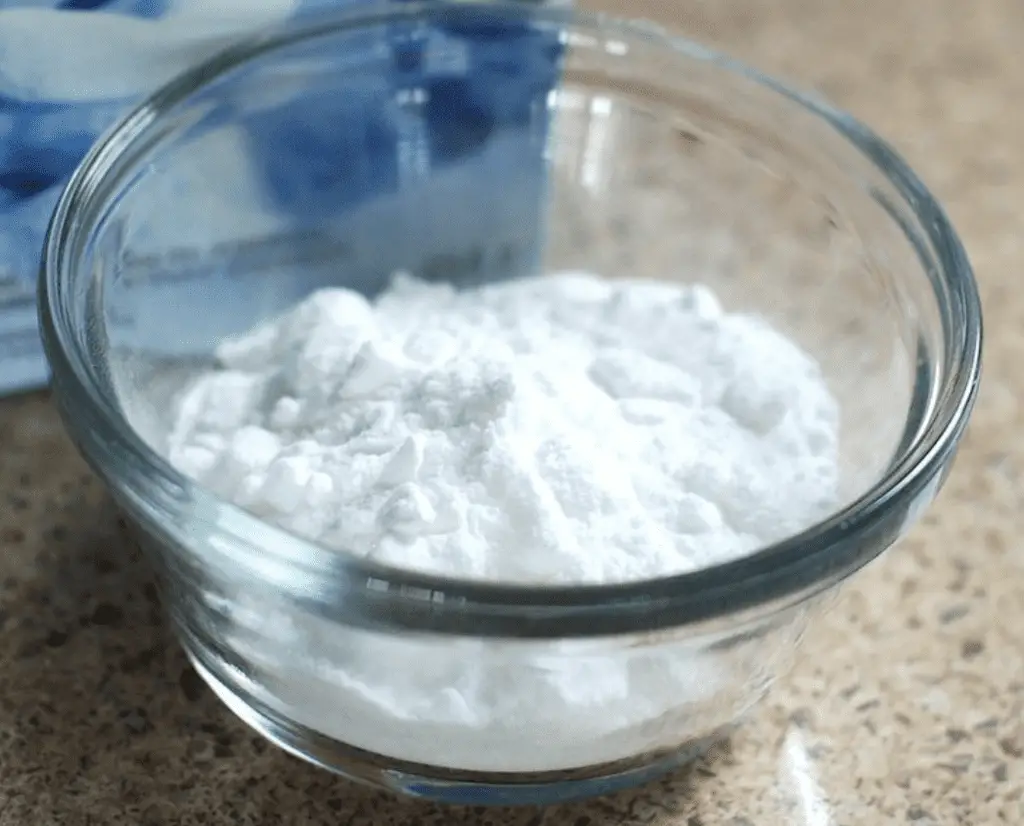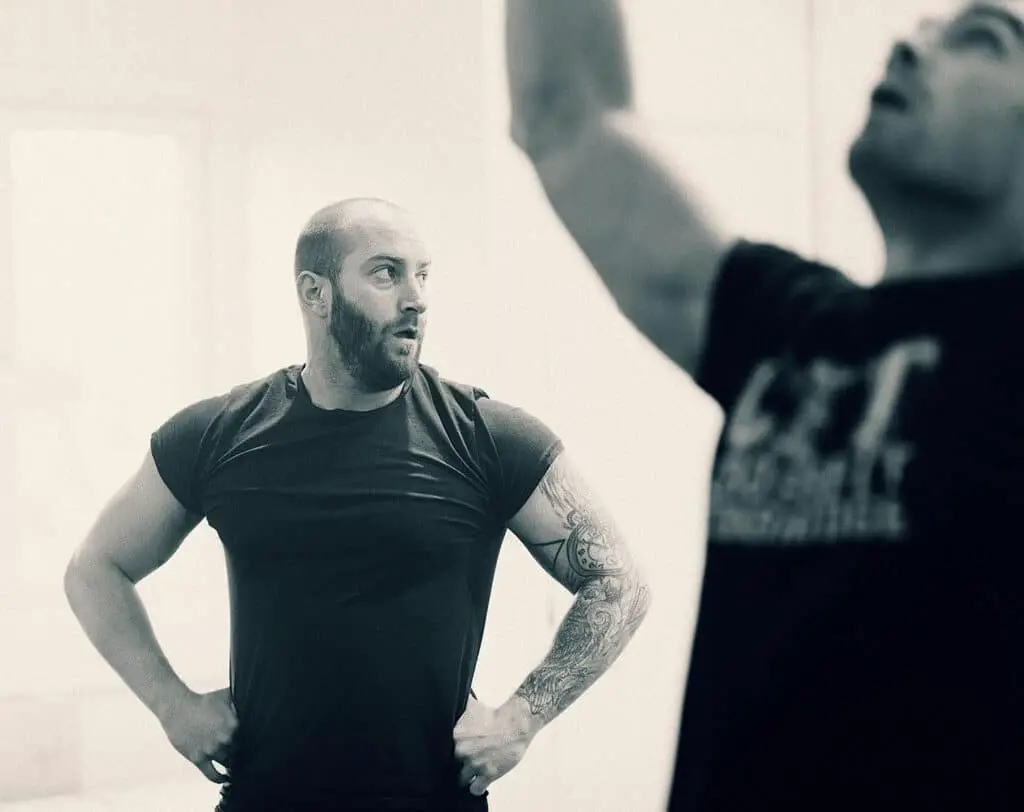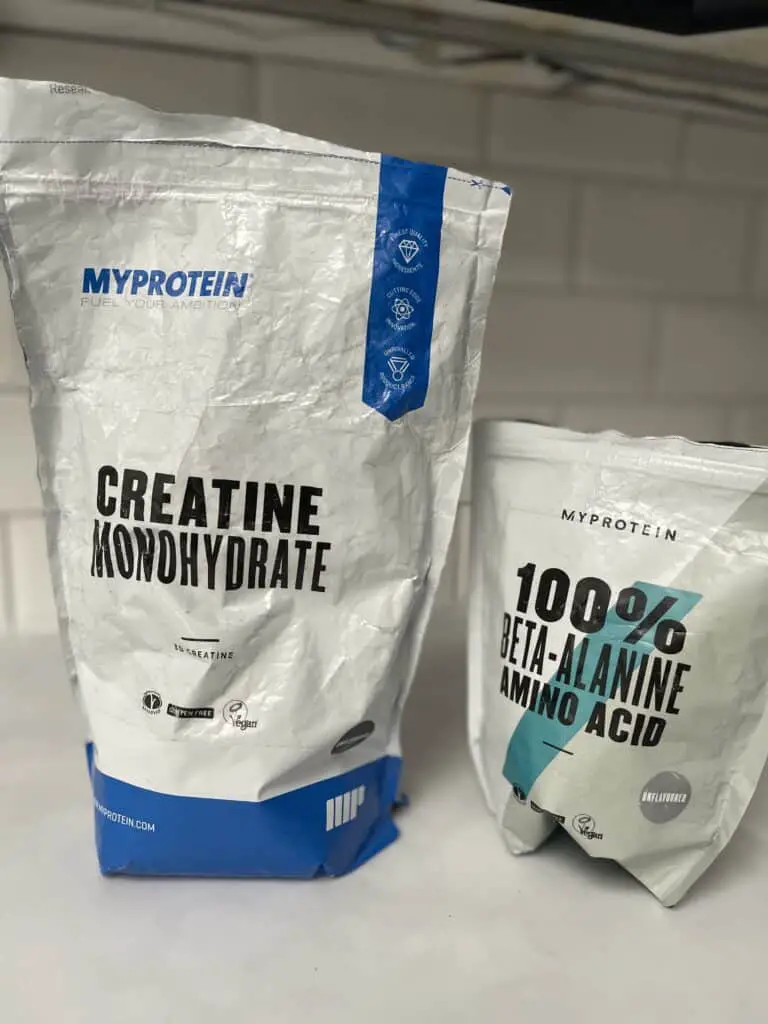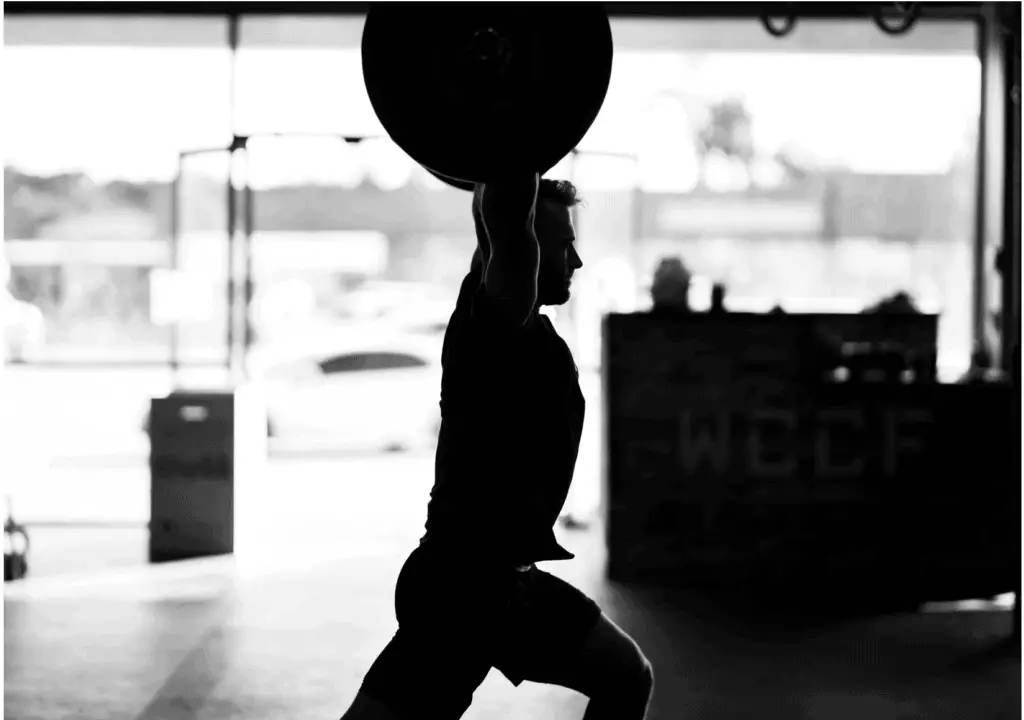Not every CrossFitter considers taking supplements. However, many do take them and various types for various reasons.
So, should you take the supplement creatine to aid performance?
If you are interested in gaining strength, an increase in work rate capacity and recovery, or physical size, then using Creatine could be a good option for you. It is widely used in many sports and strenuous based activities all over the world, scientifically shown to benefit human performance. Science has shown it to be safe and effective, so it has become a staple supplement for many CrossFitters.

Is Creatine legal?
The world Anti-Doping Authority (WADA) does not consider creatine a banned substance, so its usage in sports by professional athletes is legal.
Thus, for an everyday CrossFitter – or amateur, intermediate or advanced competitor – it is legal.
Does that sound weird? As it’s a performance-enhancing drug (PED) after all?
Comparables
Well, consider caffeine. That could also be classed as a PED. It’s a stimulant known to also improve performance. But that isn’t banned either.
Creatine is naturally found in our bodies, over 90% of which is in our muscles, and is produced by amino acids.
It’s also found in fish and meats. The cooking of meat diminishes the quantity of creatine at the point of being eaten. So the trace of natural creatine in cooked meats at the table is small.
Does Creatine actually help with CrossFit?
There are many studies demonstrating the efficacy of creatine monohydrate (creatine) in sports.
In essence, it helps with CrossFit in the way that it improves muscular strength. A study from Maurizio Balestrino says that:
“Strong evidence, including a Cochrane meta-analysis, shows that it improves muscular strength and general well-being in muscular dystrophies“
Medical Research Reviews
So far I’ve been using it on and off for many years, along with other supplements such as glutamine, cod liver oil, glucosamine, and beta-alanine.
Personally, I can tell the difference between when I’m using creatine and not using it. You definitely do feel stronger and recover quicker.
It is stored in your muscles and readily available to dispense energy quickly on demand.
Best Gym Hacks
Everything in moderation
There is a danger of over-reliance and even an unwanted placebo effect from over-usage. (If I don’t have it I won’t be able to lift as much).
Given the amount of scientific evidence since its discovery for human consumption in the 1970s, the many studies out there corroborating this and the millions of people who do use it, (plus my own long-term experience with it), it is safe to say that it is effective in CrossFit performance.

How does Creatine help with CrossFit?
In a practical sense, it helps you lift more weight, sustain an exercise for longer, recover quicker – or a mixture of all 3.
For example, if you are doing a strength set of say 6×3 Back Squats, creatine may help ensure the 6th set feels as strong as the 1st set. It may even feel stronger as your central nervous system warms up.
Then, when it comes to doing the WOD, you are more ‘fired up’ and feel like you can – and you often do – perform better. The chances are you will.
Muscle gains
Creatine is widely shown to increase muscle mass by hypertrophy. Your muscles store it, so it is readily available to dispense energy quickly on demand.
A study by Farshidfar Farnaz; A. Binder and Myrie Semone (in Benthen Science Publishers) states:
Numerous studies over the past few decades have shown that creatine supplementation has many favourable effects on skeletal muscle physiology and metabolism, including enhancing muscle mass (growth/hypertrophy). This report reviews studies addressing the mechanisms of action of creatine supplementation on skeletal muscle growth/hypertrophy.
Current Protein and Peptide Science
This is some fancy talk by clever people using long words, reporting that creatine can increase muscle mass.
Therefore, with increased muscle mass, we get stronger. If we get stronger, we get better at CrossFit.
If you’d like to know more about whether CrossFit increases muscle mass, read this Best Gym Hacks article here.

What will it do for me as a CrossFitter?
It has benefits in various ways on our human bodies. Here are the main ones.
The 4 areas studies show it helps CrossFitters are:
- Improved performance: Sustained exercise at high intensity is known to be up at 15-20%
- Muscle mass increase: it is widely shown that muscle mass can increase when using it
- Strength gain: Muscular strength and power is known to increase by up to 15%
- Injury prevention, cramping and fatigue: There are numerous studies demonstrating injury rates, muscle tightness and fatigue is reduced by those using creatine
Should I take it?
This comes down to what you’re trying to get out of CrossFit.
Oftentimes, it is associated with only men taking it as a supplement. This is likely due to the connotation of ‘bulking up’; or that creatine can aid muscle mass and water retention, and therefore size.
This is not always the case.
Women can take it, and it has the same desired effect in females as it does males. So, many women do take supplementary creatine.
In a clinical trail by Tarnopolsky, M. A., & Maclennan, D. P it is noted that:
“creatine was shown to enhance high-intensity exercise performance in both males and females. “
International journal of sport nutrition and exercise metabolism, 10(4), 452-463.
Increasing your performance
So, back to the question, if you are female or male and looking to increase your performance and yes it is a good option for you.
Say you are competing, then yes, you may find it helpful.
It’s also useful for those wanting to push themselves a bit harder and who are chasing those numbers.
For those just simply looking to work out and get fit, there is no point (in my opinion) just taking it for the sake of it. It’s something you are putting into your body in a less than organic way after all.
Check out the Best Gym Hacks flow chart below, helping guide whether to try creatine or not.

If you want to read about the myth of CrossFit making you bulky, be sure to check out this Best Gym Hacks article here.
How do you take Creatine?
There are certain ways to take creatine.

As it draws water into your cells, it is advisable to stay well hydrated. Another way of thinking of it is that creatine can make you dehydrated.
So you need to drink water when using it – more than you might usually drink.
Due to your cells absorbing water, this is known as water retention, which is the reason for increased mass due to retained water in the body. A by-product for some, therefore, is a larger-looking physique.
Some people do what’s known as loading. Others will take it ad hoc pre or post-workout most days.
Loading
This involves taking a large amount in a short space. The theory is that your muscles are saturated with creatine, which will optimise your muscle stores. Various studies have shown that by loading, the effectiveness of using the supplement is increased by up to 40%.
Following the initial ‘blast’, the dosage is then tapered down to a lower level to maintain an appropriate amount available in the muscles.
Dosing
Dosage is based on body composition, training regime and desired outcome. A qualified nutritionist would be able to provide direction on what your does should be.
The ingestion of 3g creatine/day is in the long term likely to be as effective at raising tissue levels as this higher dose
Pub Med Study – Clinical Trial
Ad Hoc or daily low-dose
This is a more leisurely option and probably the most commonly used.
A PubMed study shows that taking little and often – as opposed to ‘loading’ – still increases capacity and performance, vs not taking it at all.
Conclusion Loading vs Ad Hoc
The idea of both is that by supplementing, you are affording your muscles additional creatine for storage and usage.
Ingesting of creatine
Either way, it is ingested in oral form, normally dissolved in a liquid such as water, protein shake or something else liquid based. Don’t worry, suppositories are not needed.
Top hack: mix your dry protein with your creatine powder in your shake bottle. Chuck in your bag. When ready to train, add milk or water and consume 1-2 hours before. Do not carry around readily mixed protein shake as it will go lumpy, congealed and generally rank when left in your bag all day.
Powder form
Creatine is not advisable to sprinkle over food. It comes in powder form which independently does not taste particularly nice and would be like sprinkling dry bread flour on your food…
Coated Tablets
It is also commonly ingested in tablets.
These come in jars, bags or pots and should be consumed with liquid. The tablets are often fairly large (per 5 tablet serving equates to 5g (5000mg) from MyProtein).
For some, this is difficult to take. So using powder is easier as you can mix with your shake, water or juice.
Negative effects of creatine?
There is much in the rumour mill about the adverse effects of creatine on our bodies.
Much of the ‘evidence’ is thought to be anecdotal though, and not substantiated by clinical tests of scientific papers.
So, some cases that have been cited are largely thought to be coincidental.
These negative side-effects that some have claimed include, but are not limited to:
- Kidney and liver issues
- Digestive issues
- Bloating
- Bulking (weight gain)
- Cramps
All of the above are not backed by clinical studies or agreed upon by scientific consensus as actual detrimental effects of its usage.
Overall, it is seen as very safe and is used widely.
2 cases of negative effects of creatine
One example worth noting is the New Zealand Rugby Player Jonah Lomus that suffered from kidney failure was using creatine.
It transpired an underlying condition was present and likely the 2 were not linked, although his death was from nephrotic (kidney) issues.
There are some suggestions, however, that in very rare cases creatine can cause an increased risk of rhabdomyolysis (rhabdo). This is the breakdown of muscle fibres which are then released into the bloodstream which can be fatal.

Another example which has been cited is the death of Dale Lloyd who played for The Owl’s as a defensive back.
His parents sued The National Collegiate Athletic Association and Rice University in 2008 for his death, claiming he used creatine in a protein shake and proceeded to do 100-yard sprints before struggling to breathe and then dying.
Unfortunately, Lloyd had sickle cell disease which was an underlying factor in his situation.
Despite these two examples and the list above, the balance is tipped firmly in the favour of creatine being widely safe to use.
If you are unsure, consult your own doctor.
Creatine is good for you
On the contrary, this study shows how using creatine has a positive effect on the human body. Not just athletes or those using it for fitness gains.
Creatine has also been used to treat various diseases and health concerns, including, dementia, diabetic issues, concussion from a head injury, neuromuscular issues, and muscle loss.
Reliance
Like anything we take, ingest, enjoy or rely on, sometimes we can become too reliant. Everything in moderation after all.
If taken in the long term, an addiction-like phenomenon can occur, whereby we can underperform if we forget to take it, and based on the premise we need it to perform well.
Do CrossFit Games athletes take Creatine?
It is common for CrossFit Games (and many other Elite level athletes for that matter) to use Creatine Monohydrate.
Given its efficacy from many scores of scientific studies since the 1970s, it’s legal, useful and non-harmful for the user.
So it is easy to see why it is popular among high-level CrossFit athletes. It is cheap, useful, convenient, effective and most importantly, legal.

How do the athletes cycle creatine?
Given they are always working around the CrossFit Games season with its peaks and troughs, it is likely many will go with the more effective method of loading in 8-week cycles.
This would be planned around the CrossFit Open, Regionals and or Sanctionals, then the CrossFit Games.
Doing it this way would ensure optimisation of the creatine available in the muscles, allowing for peak performance when required.
Are Olympians allowed to take Creatine?
As we saw at the beginning of the post, WADA does not see creatine as an illegal or banned substance.
So the usage of creatine is acceptable for Olympians, CrossFit Games athletes or your everyday gym goer wanting to extract that little bit more from themselves.

Olympians can legally take creatine monohydrate should they wish, if it helps them to perform better.
Summary – Should I take Creatine for CrossFit
Given it’s a safe and useful supplement, it is worth trying if you’d like to level up your performance. If you’re going to use it, remember to stick to the following:
- Don’t overuse it
- Cycle it properly
- Drink plenty of water when using it
- Everything in moderation
